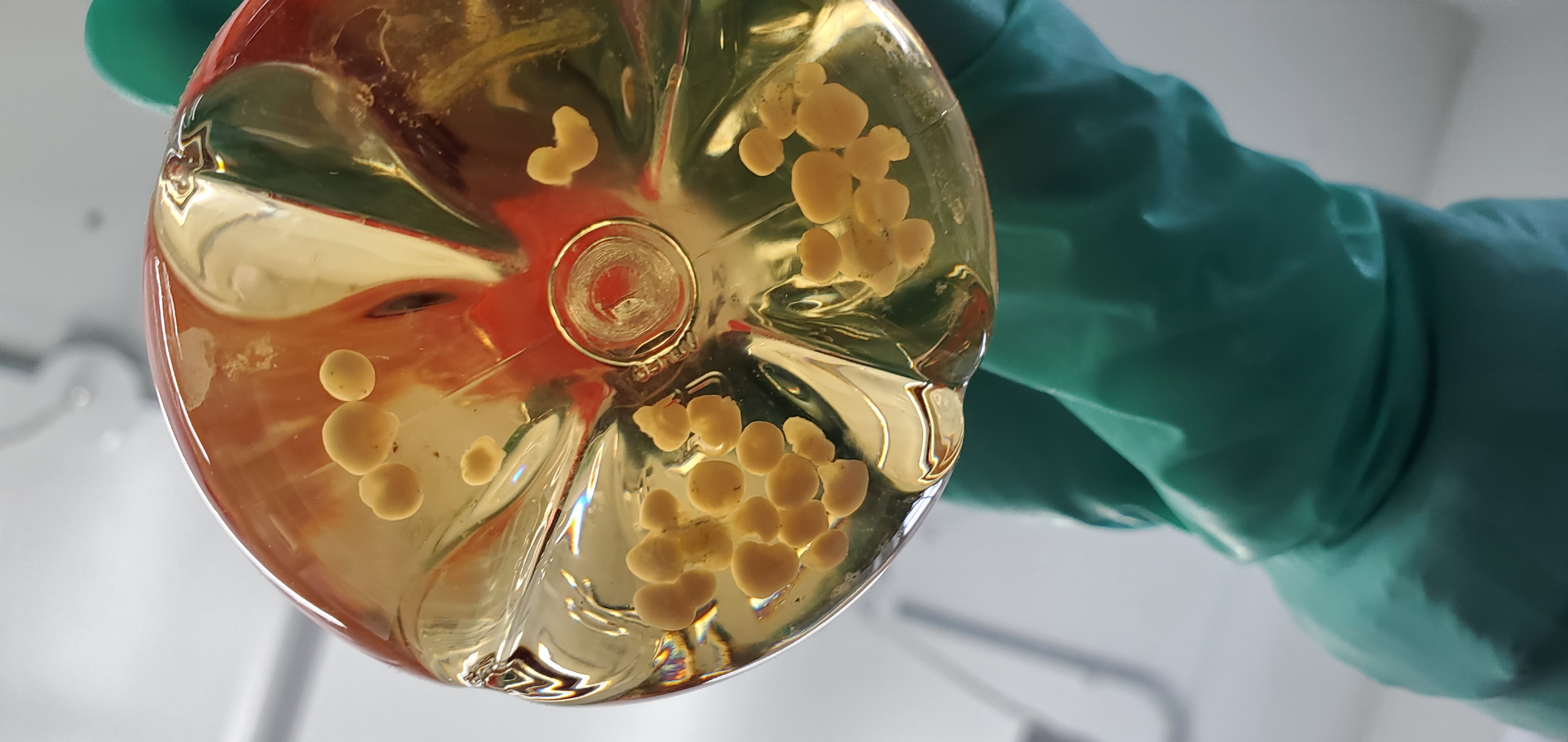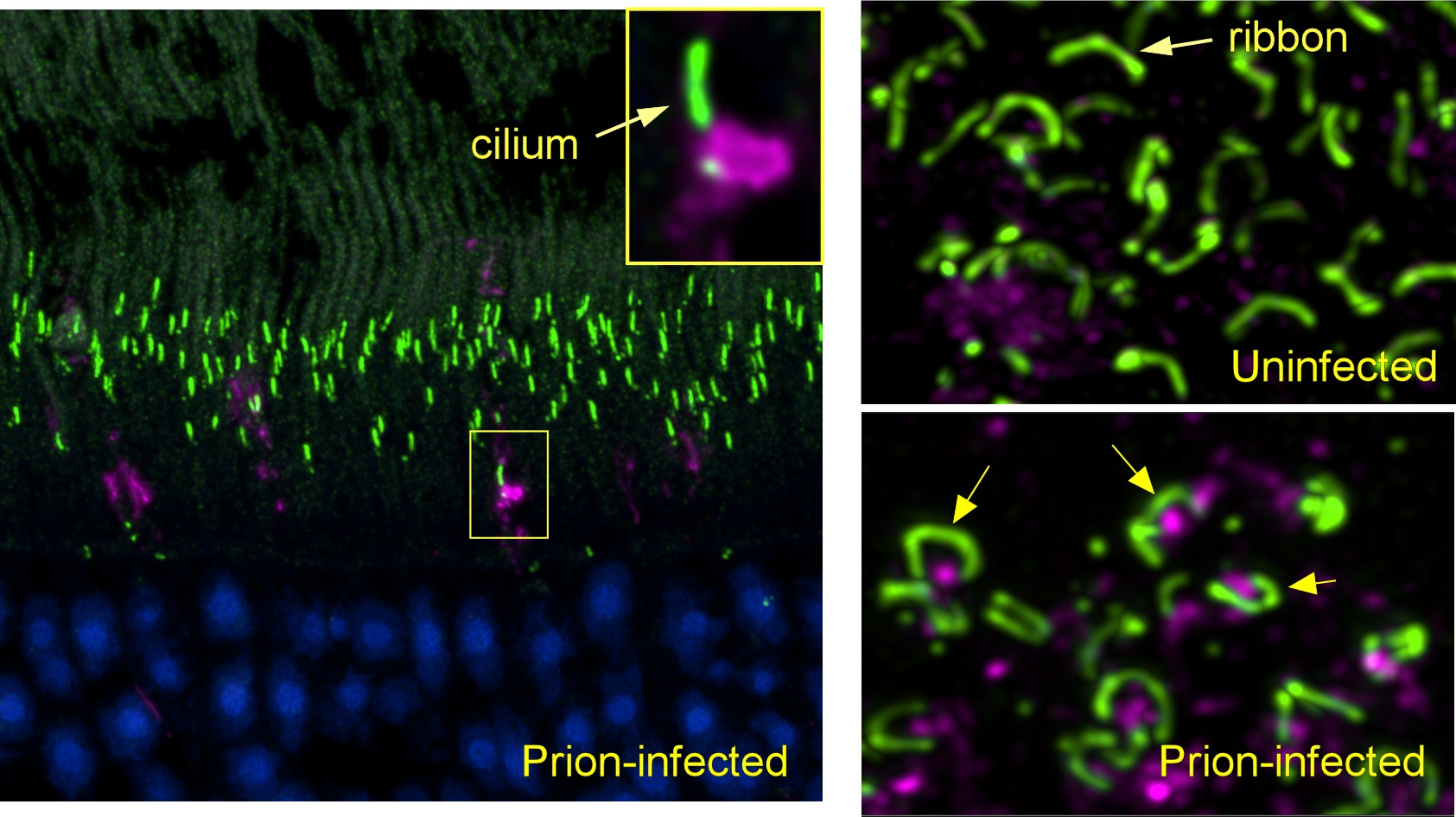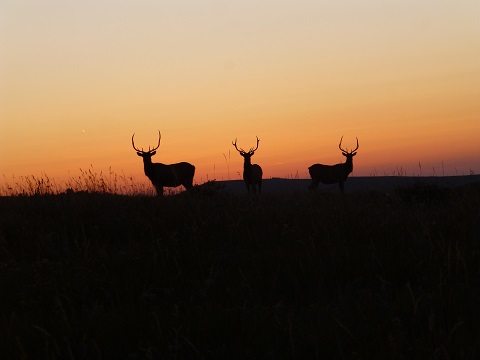Scrapie
Scrapie is a prion disease in sheep that has been present in sheep populations for almost 300 years. Despite extensive research, there is no evidence that scrapie prions can infect people. NIAID scientists use scrapie prions that have been adapted to rodents to study how prion diseases work and to find new drugs to treat them.
BSE and Variant Creutzfeldt-Jakob Disease
Bovine spongiform encephalopathy, BSE or “mad cow disease,” is a prion infection that was first recognized in cattle in the United Kingdom (U.K.) in 1986. At first it was thought that, because sheep scrapie does not infect people, it was unlikely that BSE would infect people. However, in 1996 a new form of CJD called variant CJD was identified in the U.K. Extensive research has since shown that variant CJD is the result of BSE spreading from BSE-infected cattle to humans, likely through ingestion of cattle products contaminated with BSE. NIAID researchers at RML were among the first to show that BSE prions could change the normal human prion protein into an infectious prion, suggesting a link between BSE and variant CJD.
As of 2019, more than 250 cases of variant CJD have occurred worldwide, with the majority being in the U.K. In the U.S., four cases of variant CJD have been reported, although all were likely exposed to BSE outside of the U.S. No cases of variant CJD have been associated with consumption of domestic beef in the United States.
Unlike CJD, the most common form of prion disease in people, variant CJD can be transmitted through blood or blood products. To protect the U.S. blood supply, beginning in 1999 the Food and Drug Administration recommended that blood donors who may have been exposed to BSE be deferred from donating blood. No cases of variant CJD associated with blood transfusion or blood products have been reported in the United States.
Chronic Wasting Disease
A different prion disease, called chronic wasting disease (CWD), has been detected in U.S. deer and elk (cervid) populations in more than 270 counties in 24 states, as well as in three Canadian provinces. CWD also was detected in elk in South Korea in 2002. The South Korean cases appear to be related to the importation of CWD-infected cervids from North America. More recently, CWD has been found in reindeer in two separated areas in Norway. These cases do not appear to be related to the North American CWD epidemic. Thus, the Norwegian cases may indicate that a different source may exist for Norwegian CWD. Unlike BSE, CWD can spread relatively easily from animal to animal. However, it remains to be seen whether CWD will also spread to other cervids in Norway and adjacent countries.
It is important to determine whether CWD is similar to sheep scrapie and thus unable to infect humans or whether it is more like BSE and able to infect people. There have been several reported cases of Creutzfeldt-Jakob disease (CJD) in people who have eaten venison, most much younger than the typical age associated with CJD. In each of these instances, careful investigations by the Centers for Disease Control and Prevention (CDC) have shown no causal link between CJD and CWD in deer and elk populations. Continued surveillance is important, however, to assess any possible risk of CWD transmission to humans.
CWD can spread from animal to animal in wild populations of deer and elk and there are concerns that it may be able to spread from deer or elk into people. Current research, including by NIAID scientists at RML, have suggested that people may have a high resistance to infection by CWD prions. However, more research is necessary to determine whether CWD poses any risk to humans. This is particularly important because CWD is spreading over a wider geographical area in the United States. It is possible that there is a form of CWD prion in wild cervid populations that could eventually cause disease in people.
Scientific Advances
NIH Study Shows Chronic Wasting Disease Unlikely to Move from Animals to People
May 17, 2024A new study of prion diseases, using a human cerebral organoid model, suggests there is a substantial species barrier preventing transmission of chronic wasting disease (CWD) from cervids—deer, elk and moose—to people. The findings, from National Institutes of Health scientists and published in Emerging Infectious Diseases, are consistent with decades of similar research in animal models at the…

Scientists Identify Locations of Early Prion Protein Deposition in Retina
January 29, 2021The earliest eye damage from prion disease takes place in the cone photoreceptor cells according to a new NIH study of prion protein accumulation.

Household Bleach Inactivates Chronic Wasting Disease Prions
October 4, 2019A 5-minute soak in a 40% solution of household bleach decontaminated stainless steel wires coated with chronic wasting disease (CWD) prions, . The scientists used the wires to model knives and saws that hunters and meat processors use when handling deer, elk and moose – all of which are susceptible to CWD.



